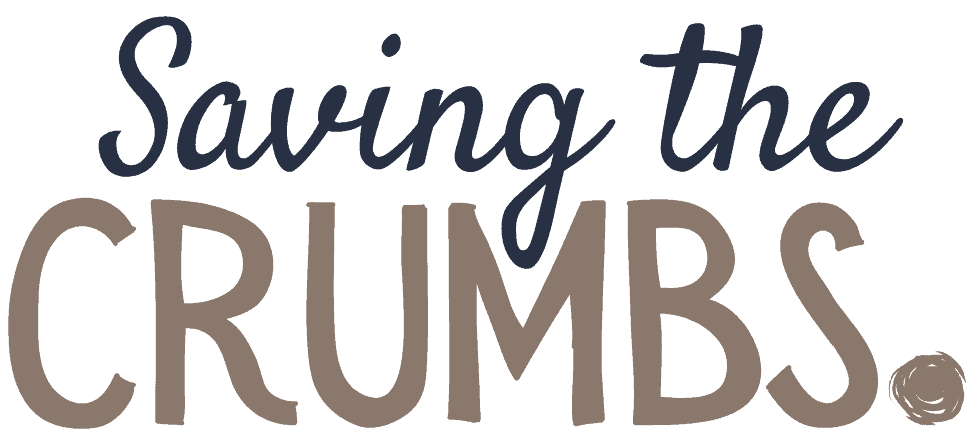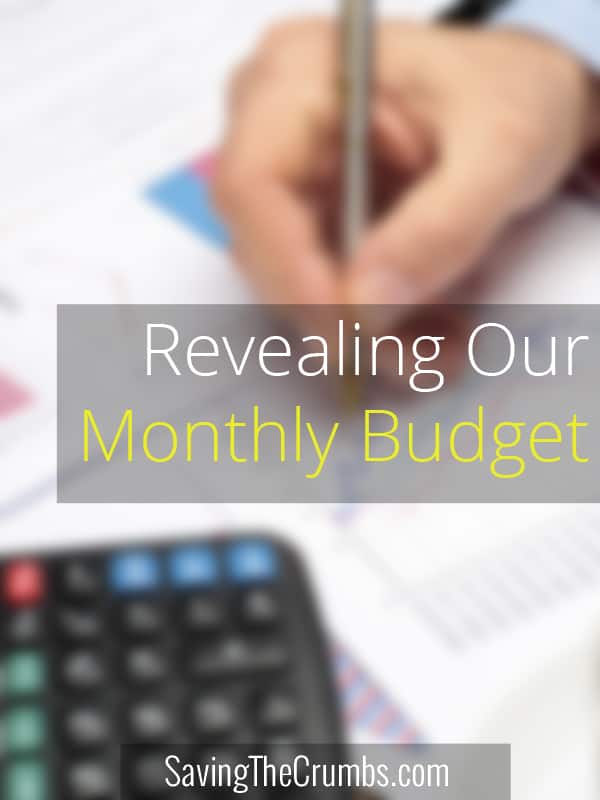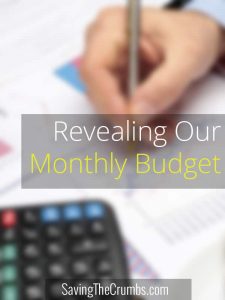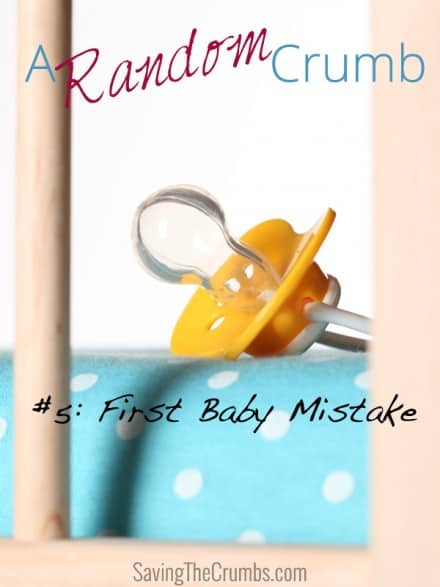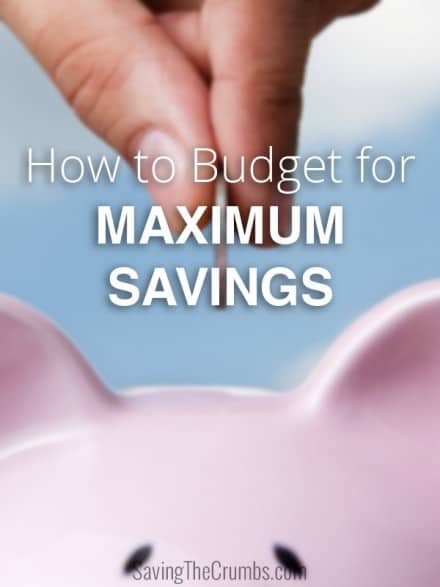Previously, we had shared with you the “big picture” of our finances for the years 2011-2013. I’m the type that has to see the full picture in order to know how the details fit in. So today, we are pulling back the curtain further to show our finances on the monthly level.
Our purpose in sharing this information with you is two-fold. We hope to give you some context regarding our monthly expenses because we plan to zero in on specific categories in future posts to look at techniques and strategies to systematically save. Additionally, we hope to encourage you to start keeping track of your monthly expenses. Knowing this information is a crucial first step to be able to start saving some serious crumbs.
You must know your enemy before you can defeat it.
Breakdown of Living Expenses
Below are our expenses for a representative month at the beginning of 2014. As you can imagine, the numbers vary from month to month, but this is what an average month would look like as of late.
| Categories | Amount | Subtotals | Notes |
| Housing | $792.74 | ||
| Mortgage | $607.24 | 15-year fixed rate at 3.49% | |
| Property Tax | $121.00 | ||
| Home Insurance | $64.50 | ||
| Utilities | $110.00 | ||
| Electricity | $50 | Our home is completely powered by electricity. No natural gas or propane. | |
| Water | $10 | Includes water for our guest house rental. | |
| Internet | $0 | We have a special arrangement where my work pays for my Internet. | |
| Cellphone | $50 | For 1 smartphone and 1 basic phone, shared on a family plan contract. | |
| Automotive | $155.00 | ||
| Gas | $125 | Honda Accord V6 | |
| Car Insurance | $30 | ||
| Groceries | $57.00 | ||
| Health Insurance | $185.00 | We use a service called Christian Medi-Share which is a medical expense sharing program. | |
| Supplies | $145.00 | ||
| Household | $25 | ||
| Personal/Hygiene | $30 | Clothes also fall under this category. | |
| Yard/Garden | $90 | We spent a bit getting our garden set up which inflated this category more than what it would be normally. | |
| Recreation | $25.00 | This includes eating out, gifts for other people, and fun things. | |
| Total: | $1,469.74 |
What You Didn’t See
As I mentioned in the inaugural post on this blog, the best way to save money is to not spend any on things you don’t need. So equally important to the things that are listed, are the things that you don’t see. Notice some of the items that did not show up in our expenses:
- Cable/satellite/Netflix/Hulu Plus/etc. TV subscriptions
- Music subscriptions
- Magazine subscriptions
- Landline telephone
- Hair cuts
- Lawn service
- Gym membership
- Consumer debt
Remember that the best deal on luxuries that you don’t need is the 100% off deal—you don’t buy it and save yourself 100%!
How We Interpret This
With our monthly expenses broken down, we systematically review each category and look to shave dollars off from the largest categories to the smallest. For example, the housing category is nearly $800/month, so if we can shave off just 10% of expenses in that category ($80), it’ll be worth more than lopping off 50% of utilities ($55). That’s the way to maximize our efforts.
We aren’t able to break it all down in this post, so stay tuned because we plan to address individual categories to look at practical strategies and techniques to save in the future.
For now, let’s take a look at how these living expenses fit into the bigger picture of our monthly income and expenses.
Monthly Income Statement
| Categories | Subtotals | Notes |
| Income | $5,500.00 | This amount is after taxes. |
| Charitable Giving | $1,200.00 | Approx. 20% of pretax income. |
| Living Expenses | $1,469.74 | The actual amount that we lived on. |
| Net Profit | $2,830.26 | The amount that we have left over for saving/investing. |
Our Approach to Budgeting
As you may have picked up, we don’t do monthly budgets in the typical sense of the term. We start off with the assumption that the ideal budget is $0 (who wouldn’t love living on nothing?) and then permit expenses only as they are needed. Then we monitor our income and expenses throughout the month somewhat like a business approaches its income statement. The emphasis is on getting expenses as close to the $0 ideal as possible, which in turn will grow the bottom line, or net profit. The goal is to minimize expenses so we can keep as much as possible to save and invest. (Of course, we differ from most businesses in that we make our charitable gifts a priority, and take it out of the top line before anything else.) This is a little different than popularly recommended budgeting techniques. Most budgeting methods usually emphasize the control of spending as opposed to maximizing savings.
Spending Control vs. Savings Maximization
Take the popular envelope system. This method works by putting predetermined amounts of cash into envelopes by category each month. So for any given month, you are allowed to spend only what’s in the envelope, once it runs out then no more purchases in that category for the month. The idea is that it keeps you from overspending by limiting what’s available to you and then prevents “borrowing” from other categories. I think it’s a good beginner system to help people who have never been on a budget before, but I believe it can actually hamper maximum savings. For example, someone might say, “Oh! I have an extra $20 in my envelope for groceries. Hurray! I get to buy more stuff!” Whereas the Crumb Saver would say, “Oh! I spent $20 less than usual for groceries this month. Hurray! That’s 20 more soldiers to put to work in my investments!” The pitfall in the envelope system is that the only way the money is designed to come OUT of the envelope is for it to get SPENT on what it’s allocated for. Leading to the feeling of permission to spend more than we actually need to, instead of not spending it at all and putting the extra to work.*
So after maximizing the net profit from our household earnings, what do we do with all of that extra?
Where Do the Savings Go?
| Extra Mortgage Payment | $2,500.00 | We can adjust this number as the need arises. Paying off the house is our primary investment currently. |
| Remaining Savings | $330.26 | These savings go toward many one-time items throughout the year like major purchases and trips. Also, it can be applied toward other investments such as our Roth IRA. |
| Total | $2,830.26 |
Currently we allocate the bulk of our net profits toward paying off our home mortgage as quickly as possible. The reason for this actually goes back to our living expenses table above. Notice that our mortgage payment is the single largest monthly expense at $607.24, so if we can wipe that out, our total living expenses will decrease by over 40%! The fact that I can get investments with rates of return exceeding the 3.49% interest rate on my mortgage is not lost on me. I’m just conservative in my finances like that and hate to be in debt. Also once the house is paid off, that will free up tons more cash to allow me to catch up on other investments relatively quickly. As you can deduce from the rate at which we’re paying extra on the house, we are slated to pay off the house in relatively short order.
What Should I Save For?
This is what we do, but there are numerous other valuable things to save and invest for. Here are just a few:
- Emergency fund – Your life will become much less stressful once you have a rainy day fund in place to buffer you from unexpected surprises. Most experts recommend an amount equivalent to 3-6 months of expenses. Since Crumb Savers have such low monthly expenses, this amount can be lower than most people. We have a fund in place that covers, at our current rate of spending, nearly a full year of living expenses.
- Major purchases – Things like computers, cameras, cellphones, cars, and other such cravings.
- Major trips – Save up for vacations, it won’t really be relaxing if you’re paying for it with debt.
- College fund(s) – It’s never too early to start planning if you have kids, especially as college tuition continues to rise faster than the rate of inflation.
- Wedding – If you might be on the hook for the tab for a wedding (be it your own or your children’s), you may want to think about this one.
- Retirement – Maybe even early retirement!
- Down payment on a home – Perhaps even 100% down! (But no less than 20%.)
- Capital to start a business – Starting a business with no debt will place you head and shoulders above the rest.
- Giving more – And of course, you can always increase your level of charitable giving.
Your Turn
Do you know much you spend per month? If you don’t, now is the time to find out! It’s the first step in winning the battle of your personal finances. Why don’t you take it up as your personal challenge to spend a little time this month and figure out where all your money is going? Get organized and get to know your enemy. Then you can start taking concrete actions to save some serious crumbs.
What tips and tricks do YOU have to share about managing your monthly budget? Let us know in the comments below!
*There’s also the issue of the fungibility of money which is another principle that decreases the efficiency of systems like the envelope system, but that’s worthy of another post.
